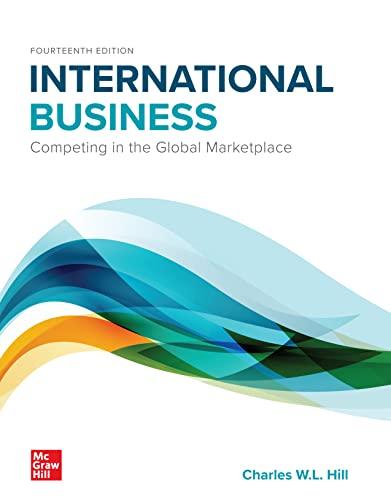Answered step by step
Verified Expert Solution
Question
1 Approved Answer
Consider the following: Tariffs are paid by the citizens of the country imposing tariffs, not by the citizens of the country producing the products upon
Consider the following:
- Tariffs are paid by the citizens of the country imposing tariffs, not by the citizens of the country producing the products upon which the tariffs are levied.
- The term "trade deficits" is a misnomer. Every country's trade is always in balance.
- Trade deficits do not mean the US no longer produces anything to export. The US is the world's second largest manufacturer and the world's second largest exporter of manufactured goods.
- Trade deficits reflect a strong economy. Trade deficits rise during economic expansions and fall during economic contractions. Unemployment falls as trade deficits rise and rises as trade deficits fall.
- Imports and exports are complements, not competitors. Both are necessary and both contribute to economic growth.
- Roughly one-third of all US imports and exports is trade between US multinational companies and their overseas subsidiaries.
- Foreign-owned companies operating in the US number in the thousands and provide directly or indirectly jobs for more than 13 million US workers (roughly, 10% of the US workforce).
- US trade deficit in goods in 2018 (as a % of GDP) was the same as it was 5, 10 and 15 years earlier.
- The rise in US goods trade deficit with China has not increased the US total goods trade deficit. It has been offset by reduced goods imports from other trading partners.
- There is a strong correlation between the rise in world trade and:
- The rise in world GDP
- The dramatic fall in the world's extreme poverty rate
- The rise in world life expectancy
- For every US manufacturing job lost to trade between 2000 and 2010, seven US jobs were lost to domestic productivity improvements. Those seven jobs cannot be brought back from overseas because they never left the US.
Write a 700- to 1,050-word evaluation of credible economists' unbiased opinions on the benefits, costs, and results of current US trade and tariff policies. Complete the following in your evaluation:
- Evaluate how US trade policy changes in the last 2 years affect global trade activities by multinational corporations.
- Discuss credible economists' opinions on the long-term effects of trade and tariff policies changes in the last 2 years.
- Explain the effect of recent changes to trade and tariff policies have had on your employer, you, or someone you know.
Step by Step Solution
There are 3 Steps involved in it
Step: 1

Get Instant Access to Expert-Tailored Solutions
See step-by-step solutions with expert insights and AI powered tools for academic success
Step: 2

Step: 3

Ace Your Homework with AI
Get the answers you need in no time with our AI-driven, step-by-step assistance
Get Started


